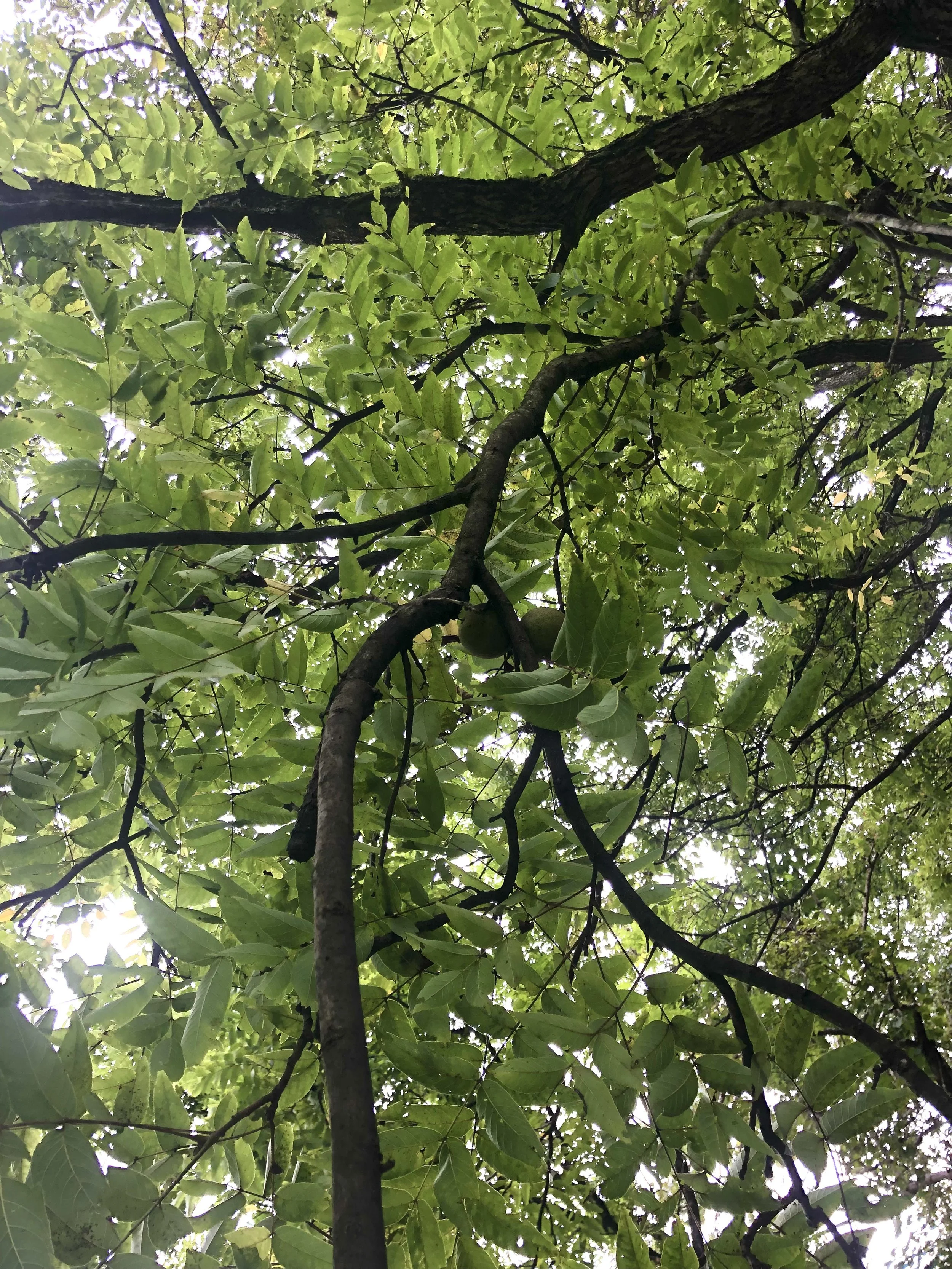Black Walnut
Various stages of Black Walnuts – in their green outer hull, with hull removed, and cracked open (Image by Unruly Gardening)
Black Walnut- Juglans nigra
Black Walnut is a native tree that grows in the Eastern part of North America. Trees can grow to over 100 feet tall and live for over 200 years. Black Walnut trees provide food, shelter, and shade for wildlife & is prized for its valuable hardwood. The leaves are serrated, ovate/oblong, with pointy tips & the leaves grow alternately on the stem. The leaves and round nuts with green hulls have a citrusy antiseptic scent. One tree can produce 66 to 350 lbs per year. Black Walnut produces nuts in what’s called “alternate bearing years”, or a good crop production every other year.
Black Walnut Tree- Image by Kanoelani Achi
Black Walnut- Juglone
Black Walnut trees produce a chemical known as juglone & can harm & even kill other plants or trees surrounding them. Juglone is an organic compound that stunts the growth of other plants and even causes trees and plants to cease growing or even die. Some trees like Pawpaw, Persimmon, Crabapple, Peach, & Quince grow well under the Black Walnut tree. Vegetables like carrots, parsnips, onions, squash, & wild yam will thrive under the Black Walnut tree, but potatoes are sensitive to juglone and do not grow well.
Caution: If you have a nut allergy Black Walnut hull can cause skin irritation, blistering and allergic reactions.
Black Walnuts with green hulls- Image by unknown
Black Walnut- Many Uses
Black Walnut is used to make wood stain, ink, hair dye, clothing dye, face paint, guns, cabinets, musical instruments, furniture, cleaning abrasives, salves, sealant, filtration media, & cooking oil.
Herbal Benefits: Black Walnut is anti-inflammatory, antiparasitic, antioxidant, antifungal, astringent, analgesic, promotes cardiovascular health, & protects nerve cells. It has been used historically for expelling worms & parasites & helps with fever, kidney ailments, gastrointestinal concerns, ulcers, toothache, to draw out venom from snake/spider bites, syphilis, mosquito repellant, bacterial and fungal infections, used to relieve skin conditions like viral warts, eczema, acne, psoriasis, poison ivy, & used to relieve bites & stings.
Black Walnuts in a pot- Image by Cori Achi
Black Walnut- Dye Recipe
1. Collect as many Black Walnuts as you can gather (wormy ones are ok).
2. Place Black Walnuts into a 5 gallon bucket ¾ full and fill with rainwater or filtered water.
3. Let the nuts ferment for about 3 weeks or until the water is dark brown & somewhat sludgy.
4. Boil the fermented solution (nuts and water) in a large pot for one hour on medium heat.
5. Strain the liquid and return to the pot.
6. Place cloth or other natural fiber into the pot and boil on medium heat for 60-90 minutes or leave overnight.
7. Remove from heat and hang to dry.
8. Dry completely before washing.
Black Walnut dyed cloth hanging to dry- Image by Cori Achi
Sources:
The Herbal Handbook for Homesteaders by Abby Artemisia of The WANDER School
Harvesting Color: How to Find Plants and Make Natural Dyes by Rebecca Burgess
Unruly Gardening- Harvesting & Drying Black Walnuts (+hull & leaf uses!)
Redemption Permaculture- 19 Edible Plants That Can Grow Near Black Walnut Trees





